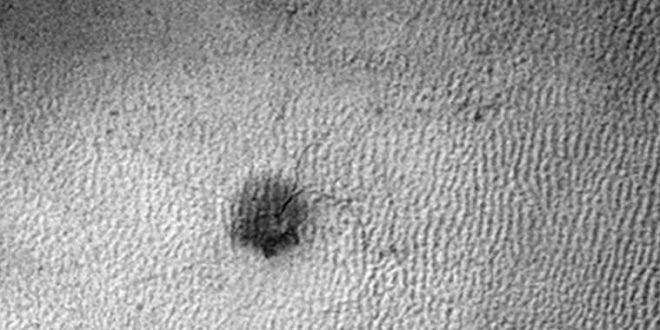NASA researchers have finally found the answers of the mysterious spider-shaped features in the red planet Mars.
Images sent from NASA’s Mars Reconnaissance Orbiter spacecraft were being studied specifically the growth of the spidery feature in the red planet’s terrain, from one Martian spring to another. According to the space agency, the spiders range in size from tens of hundreds of yards, with multiple channels typically converging at a central pit that resembles the legs and body of a spider, News reported.
“We have seen for the first time these smaller features that survive and extend from year to year, and this is how the larger spiders get started,” said Ganna Portyankina of the University of Colorado, Boulder, in the statement. “These are in sand-dune areas, so we don’t know whether they will keep getting bigger or will disappear under moving sand.”
Scientists think that dunes may be a factor in the formation of the baby spiders, but may also keep many of them from becoming full-scale spiders. In a paper published in the journal Icarus Portyankina and her co-authors estimated that, based on the growth rate of the smaller troughs, it could take more than a thousand Martian years to sculpt a typical spider. A Martian year lasts about 1.9 Earth years.
“Much of Mars looks like Utah if you stripped away all vegetation, but ‘spiders’ are a uniquely Martian landform,” said Candice Hansen of the Planetary Science Institute, Tucson, Arizona, a co-author of the report, in the statement.
The spidery terrain is at the red planet’s south pole. Carbon dioxide ice or “dry ice”, which occurs naturally at Mars’ poles in winter, helps create the spiders. Spring sunshine warms the ground underneath the ice, causing some carbon dioxide to thaw into gas, which bursts out of the ice and erodes the ground.
The red planet’s surface continues to be a source of fascination for scientists. Earlier this year NASA released an image of dunes on Mars that bear a striking similarity to Morse code.
Mars looms ever larger in America’s space future. Earlier this year NASA announced a May 2018 launch for its delayed Mars Insight mission to study the red planet. NASA’s Mars Reconnaissance Orbiter celebrated 10 years at the red planet on March 10.
NASA’s goal is to send a manned mission to Mars by 2035. However, former astronaut Buzz Aldrin thinks that a slightly later target date of 2040 is more realistic. In an interview earlier this year, the Gemini 12 and Apollo 11 astronaut told FoxNews.com that by 2040, astronauts could have visited Mars’ moon Phobos, which could serve as a sort of stepping stone to the Red Planet.
Private space company SpaceX plans to launch an unmanned mission to Mars as early as 2018, with CEO Elon Musk eyeing a manned space mission around 2025. Musk also hopes that humans will one day establish a city on Mars.
https://www.youtube.com/watch?v=lhHbpdF7AZM
Agencies/Canadajournal
 Canada Journal – News of the World Articles and videos to bring you the biggest Canadian news stories from across the country every day
Canada Journal – News of the World Articles and videos to bring you the biggest Canadian news stories from across the country every day



